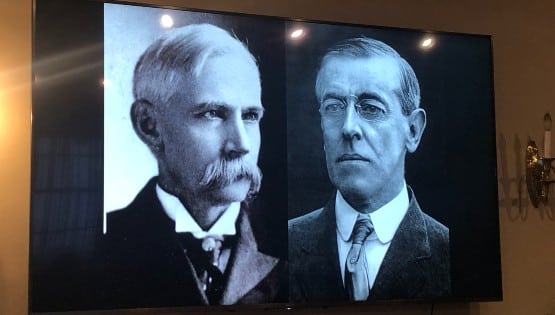
Researchers analyzed the six seconds leading up to a crash in nearly 1,700 videos of teen drivers taken from in-vehicle event recorders. The results showed that distraction was a factor in 58 percent of all crashes studied, including 89 percent of road-departure crashes and 76 percent of rear-end crashes. The National Highway Traffic Safety Administration (NHTSA) previously has estimated that distraction is a factor in only 14 percent of all teen driver crashes.
“These real world crash videos eliminate any speculation about teen drivers’ behaviors and other environmental factors inside the vehicle in the moments leading up to an impact,” said Martha Mitchell Meade, Manager of Public and Government Affairs for AAA Mid-Atlantic. “The in-depth analysis of the videos provides indisputable evidence that teen drivers are distracted in a much greater percentage of crashes than we previously realized.”
In the study, the most common forms of distraction leading up to a crash by a teen driver included:
- Interacting with one or more passengers: 15 percent of crashes
- Cell phone use: 12 percent of crashes
- Looking at something in the vehicle: 10 percent of crashes
- Looking at something outside the vehicle: 9 percent of crashes
- Singing/moving to music: 8 percent of crashes
- Grooming: 6 percent of crashes
- Reaching for an object: 6 percent of crashes
“Although not surprising, it is discouraging that passengers and cell phones were found to be the two most common forms of distraction, as it is commonly known that both significantly increase crash risks for teen drivers,” added Meade. “The situation is made worse by the fact that young drivers, with few hours behind the wheel, cannot draw upon previous experience to manage to unsafe conditions and they have reduced time to react when they are distracted.”
Researchers found that drivers manipulating their cell phone (includes calling, texting or other uses), had their eyes off the road for an average of 4.1 out of the final six seconds leading up to a crash. The researchers also measured reaction times in rear-end crashes and found that teen drivers using a cell phone failed to react more than half of the time before the impact, meaning they crashed without braking or steering. “When no evasive actions are taken before an impact the driver is essentially driving blind for those key seconds when the crash may have been avoided or the severity of it lessened,” Meade said.
The study results, according to AAA, reemphasize the importance of strong graduated driver license (GDL) and distracted driving laws to ensure they provide as much protection as possible, for teens. While Virginia has one of the stronger sets of GDL restrictions in the nation, there is still room for improvement in two key areas.
First, while Virginia law does limit new drivers to only one passenger who is less than 21 years old, police may not stop a vehicle for this infraction alone. The same is true for teen drivers who illegally talking on a cell phone or use other prohibited electronic device while driving; they cannot be pulled over even if police clearly witness the behavior unless there is another reason to stop them. Changing both of these offenses to primary enforcement status would not only allow police to enforce the laws and send a strong message to teens and their parents of the seriousness of these actions, but would also further deter teens due to the fear of being ticked.
Teens have the highest crash rate of any group in the United States. About 963,000 drivers age 16-19 were involved in police-reported crashes in 2013, which is the most recent year of available data. These crashes resulted in 383,000 injuries and 2,865 deaths.
Parents play a critical role in preventing distracted driving. AAA recommends that parents teach teens about the dangers of cell phone use and restrict passengers during the learning-to-drive process. Before parents begin practice driving with teens, they should create a parent-teen driving agreement that includes strict ground rules related to distraction. AAA offers a comprehensive driver education program, where teens can learn specifically how using a cell phone affects driving abilities and increases their crash risk. For more information, visit TeenDriving.AAA.com.
The full research report and b-roll video of teen driver crashes is available on the Foundation’s website. The Foundation partnered with researchers at the University of Iowa to conduct this study.
Lytx™, Inc., a global leader in video-based driver safety technology using in-vehicle event recorders, provided the collision videos. The Lytx DriveCam program collects video, audio and accelerometer data when a driver triggers an in-vehicle device by hard braking, fast cornering or an impact that exceeds a certain g-force. Each video is 12-seconds long and provides information from before and after the trigger. The videos are used in the DriveCam Program for coaching drivers to improve behavior and reduce collisions.
Established by AAA in 1947, the AAA Foundation for Traffic Safety is a 501(c)(3) not-for-profit, publicly-supported charitable educational and research organization. Dedicated to saving lives and reducing injuries on our roads, the Foundation’s mission is to prevent crashes and save lives through research and education about traffic safety. The Foundation has funded over 200 research projects designed to discover the causes of traffic crashes, prevent them and minimize injuries when they do occur. Visit www.AAAFoundation.org for more information on this and other research.










